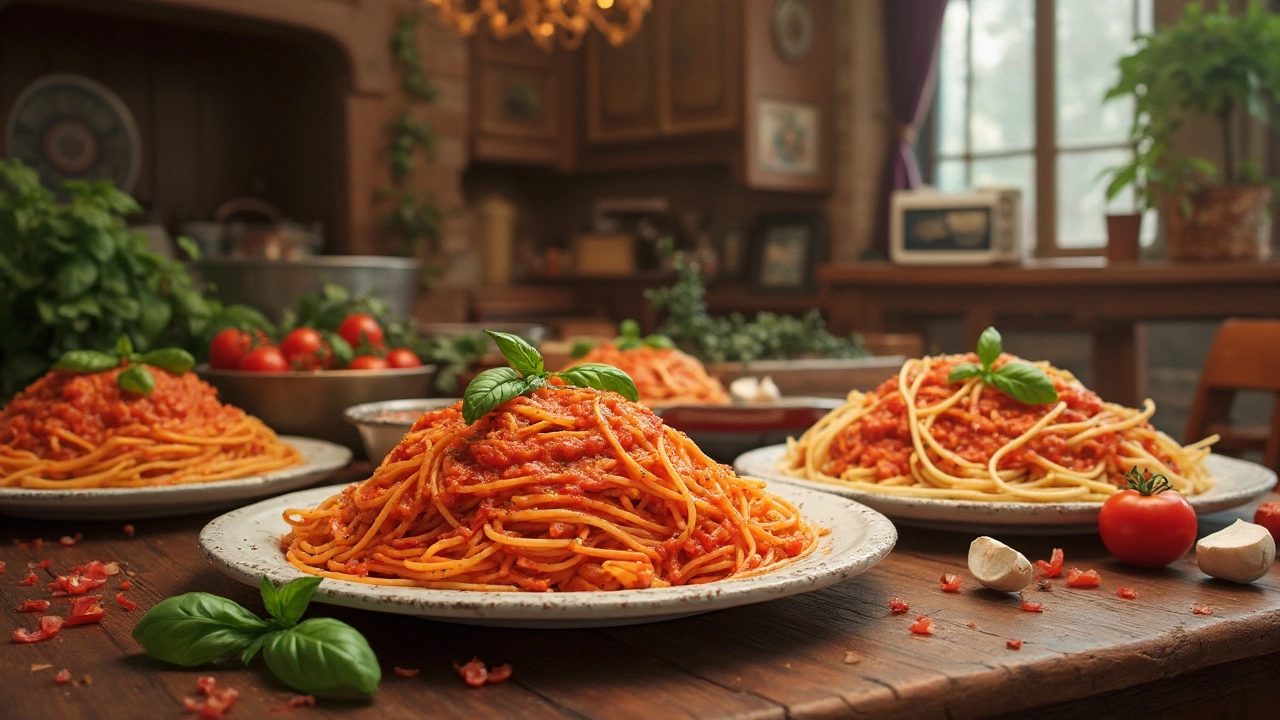Marinara Sauce: Your Go‑To Tomato Sauce Made Simple
If you love pasta, pizza, or anything that needs a bright red sauce, marinara is the kitchen hero you keep reaching for. It’s basically tomatoes, garlic, and a few herbs, but the magic is in the timing and balance. Below you’ll get a no‑stress recipe, ideas to jazz it up, and the best ways to store leftovers so the flavor stays fresh.
Basic Marinara Recipe
Here’s the core recipe you can pull together in under 30 minutes. You only need a few pantry staples, so no special trips to the store.
- 2 tablespoons olive oil
- 4 garlic cloves, minced
- 1 onion, finely chopped (optional for extra sweetness)
- 28 oz (1 can) whole peeled tomatoes, crushed by hand or with a blender
- 1 teaspoon dried oregano
- 1 teaspoon dried basil
- ½ teaspoon red‑pepper flakes (adjust to taste)
- Salt and black pepper, to taste
- Fresh basil leaves for garnish (optional)
Heat the olive oil in a medium saucepan over medium heat. Add the garlic (and onion, if you’re using it) and stir for about a minute—just until fragrant, not browned. Pour in the crushed tomatoes, then sprinkle in oregano, basil, and red‑pepper flakes. Stir, bring to a gentle simmer, and let it bubble uncovered for 15‑20 minutes. Taste, add salt and pepper, and finish with a few fresh basil leaves if you have them. Serve immediately or let it cool for later use.
Smart Variations & Storage Tips
Once you master the basic version, you can tweak it for different meals. Add a splash of red wine or a teaspoon of sugar if the tomatoes taste too acidic. For a richer sauce, stir in a tablespoon of butter at the end of cooking. Want a spicy kick? Double the red‑pepper flakes or blend in a small chopped chili.
Storing marinara is easy. Transfer the cooled sauce to airtight jars and refrigerate for up to a week. For longer storage, freeze it in portion‑size freezer bags for up to three months. When reheating, add a splash of water or broth to loosen the sauce if it thickened.
Use this sauce wherever you like: toss it with spaghetti, spoon it over meatballs, drizzle on roasted vegetables, or use it as a base for pizza. Because the flavor is simple yet bright, it pairs well with anything from grilled chicken to tofu.
Bottom line: marinara doesn’t need a lot of ingredients, just good timing and a little love. Follow the steps, adjust to your taste, and you’ll have a versatile sauce ready whenever a hunger pang hits. Happy cooking!
Spaghetti Sauce vs Marinara Sauce: What's the Difference?
Diving into the world of pasta, one quickly encounters the debate between spaghetti sauce and marinara sauce. This article explores the key distinctions in ingredients and preparation, shedding light on how these sauces can influence a dish's flavor and texture. Discover their origins, subtle nuances, and the best culinary contexts for each. Whether you're prepping a family dinner or a gourmet feast, understanding these differences will elevate your cooking game.
